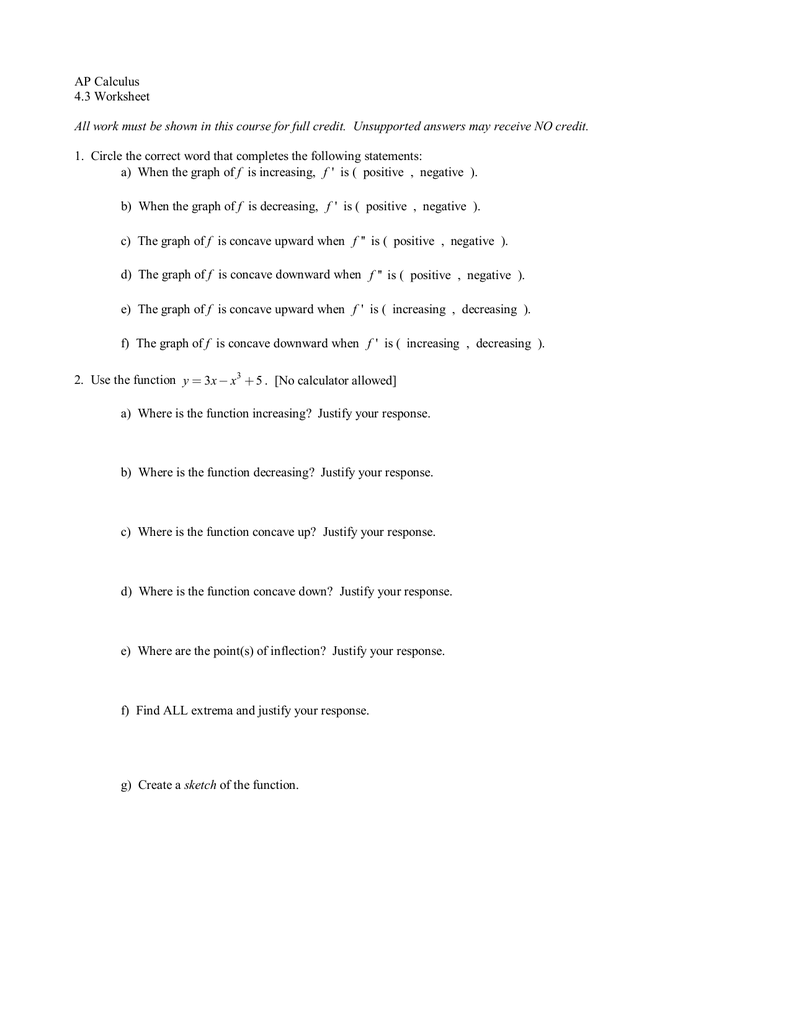

The free response section involves conceptual questions, where calculations are simple enough so as to not require a calculator.

The multiple-choice section typically asks for an integral to be evaluated numerically, for a function to be graphed, or for both of these tasks to be accomplished. Both sections have parts where a calculator is allowed, and parts where it is not. Speaking of the AP exam, it consists of a multiple-choice section (45 questions in 1 hour and 45 minutes) and a free response section (6 questions in 90 minutes). Regardless, one can almost plan on encountering a question on the AP exam that involves the volume of a solid. Varsity Tutors offers resources like a free AP Calculus AB Diagnostic Tests to help with your self-paced study, or you may want to consider an AP Calculus AB tutor. Fortunately, on the AP exam, these types of problems either allow the use of a calculator, or simply ask for the given integral to be set up, but not evaluated. Again, the challenge is determining which method to use, in addition to actually evaluating the integral. These problems also require practice, as different methods are again involved, from the shell method to the disk and washer methods. The second half of AP Calculus (AB) concludes with different applications of integration, which includes finding the volumes of solids generated by revolving a given area around a given axis. The latter category often requires extensive practice, for it can be as much a challenge to know which integration technique to apply to a specific problem as it can be to evaluate the integral. the power rule of integration), and some of which are more complex (integration by substitution, integration by parts, and trigonometric substitution). From there, techniques of integration are introduced, some of which are straightforward (i.e. This part starts with the definition of an integral and Riemann Sums (left point, right point, and midpoint) as a lead-in to the concept of an integral being the area under a given function over a specific domain. The second half of AP Calculus (AB) focuses on integration.

Finally, understanding the meaning of derivatives and finding critical points is also crucial to success in the class. the power rule, quotient rule, product rule, and others) for finding a derivative of a given function. So, for this first part of AP Calculus (AB), it is essential to understand not only the limit of differentiation, but the different rules (i.e. From there, rules of differentiation are discussed. The course usually begins with a discussion of limits and continuity, which then builds up to consider the limit definition of a derivative.
Ap calculus practice problems pro#
AP Calculus (AB) is certainly a demanding class for these reasons however, by approaching the course in the right way, you can master it and attain your best score on the AP Calculus AB exam. Whether you need top Calculus tutors in Albany, Calculus tutors in Milwaukee, or top Calculus tutors in Albuquerque, working with a pro may take your studies to the next level.ĪP Calculus (AB) is essentially divided into two main topics: differentiation and integration. The large amount of content it covers, the workload it demands, and the necessary preparation it requires for its corresponding AP exam all combine to make AP classes formidable challenges. These helpful tips have been collected by the author over the years and shared with her own students, and are now being shared with you.For many high school students, an AP course in any subject represents a serious undertaking. The reference section of the book contains formulas and theorems needed for the AP test, which are carefully chosen, conveniently organized and easy to access and view.Īnother important feature of this book is a collection of effective tips for the AP Test, which helps the reader to avoid common mistakes, flaws and misconceptions. The solutions with step-by-step explanations to each and every problem created in the form of PowerPoint presentation are available for ordering here: AB Solutions and BC Solutions. The problems in these exams are similar in their level of difficulty, wording and variety to those on the AP Exam. The exams in this book are in the same format as the Multiple-choice section of the actual AP Exam. It provides the reader with comprehensive practice, which will help the student gain confidence, knowledge and test taking skills necessary to do well on the AP Exam. They are meant to reinforce key skills, such as attention to detail, to review all types of exam problems, and to have the optimal number of each specific problem type reviewed. These books are created with the student in mind.


 0 kommentar(er)
0 kommentar(er)
